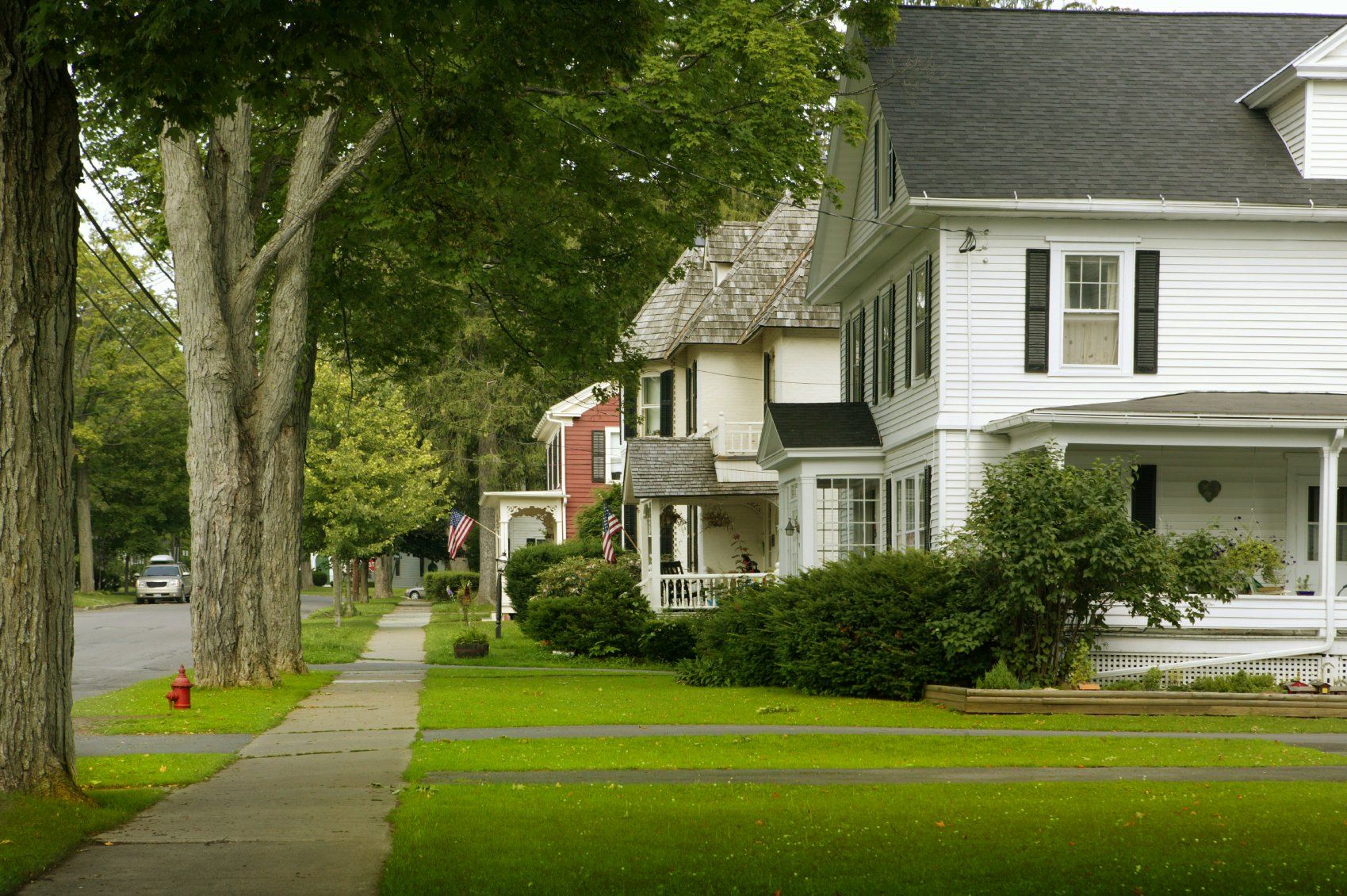15 Reasons Why Real Estate is the Best Investment
Investing in real estate can feel like a big decision and one you shouldn’t take lightly, but it’s also one of the best decisions you can make.
You have many options for using your capital to grow your net worth and save for the future. Here are 15 reasons why real estate is the best investment.
1. It’s a Tangible Asset
Investing money can be scary for investors, especially when you can’t see or touch it, such as investing in stocks or cryptocurrency. On the other hand, you can see, feel, and even control real estate.
This gives investors greater peace of mind, knowing they can renovate, repair, or even sell the asset but still be in control.
When you sell stocks, for example, you have no control over their value. You are at the mercy of the market price and current demand. While a real estate market determines the property’s value, you can do more to increase the property’s value to earn greater capital gains.
2. Real Estate Provides Cash Flow
Trading your money for an investment is a big deal. When you don’t see anything from it until you sell the asset, it can be frustrating or even cause you to want to sell it just to see your cash again.
When purchased and used as rental properties, real estate provides cash flow. You earn cash from the monthly rent, plus, of course, any profits earned from selling the property.
While you must factor in vacancies and bad renters, you’ll likely have more consistent cash flow than with other investments, like stocks or ETFs.
3. Real Estate Is a Hedge Against Inflation
When inflation rises, the power of the dollar falls. As prices increase for various goods and services, so does the value of properties and rental prices.
If you own a rental property, you may be able to charge higher rents when the lease renews or you get new tenants. You’re also better positioned to earn higher profits when you sell the property during inflationary periods because of higher costs.
On the other hand, stocks typically decrease in value because companies often struggle during periods of inflation. Companies must charge higher prices to cover their higher costs, but with consumer spending down during inflation, stock values typically decrease.
4. Real Estate Investors Get Tax Deductions
Real estate investors are often eligible for tax deductions that other investors, like stock or bond investors, don’t get.
The most common deductions are for depreciation (27.5 years for residential buildings and 39 years for commercial buildings), mortgage interest, maintenance and repairs, property taxes, and travel expenses.
Of course, tax deductions vary depending on the location, how you own the property, and other tax-related scenarios. Always consult your tax advisor to determine how to best file your taxes to take advantage of real estate tax deductions.
5. You Can Leverage Your Investment
Typically, you can only invest as much cash as you have, but real estate allows you to leverage your investment with mortgage financing.
For example, if you want to purchase a $200,000 home but only have $50,000, you may be able to put the $50,000 down and borrow the rest. This enables you to purchase a home for $200,000 without investing dollar for dollar.
While you can invest on margin with stock investing, it’s a more complicated scenario, and not everyone qualifies. Mortgage financing has more flexibility and is available to many investors.
6. Property Appreciation Is Likely
There are few guarantees in life when it comes to investing. You cannot guarantee or assume that a company’s stock value will increase or that the company will stay in business.
But you can count on property appreciation if you do your due diligence and invest in an area where property values typically appreciate.
As mentioned, you also have a certain level of control regarding property appreciation, as you can force it by upgrading or renovating the property. Working with a reputable real estate agent can ensure you invest in an area with appreciating values.
7. Real Estate Doesn’t Correlate With the Stock Market
The No. 1 rule in investing is to diversify your portfolio, which means don’t put all your money in one type of investment, such as stocks. Diversifying your portfolio with real estate increases your chances of seeing capital gains, no matter what happens in the market.
This means if the stock market crashes, real estate won’t necessarily follow, ensuring your portfolio isn’t a total loss, even in a challenging market.
8. Real Estate Investing Can Be Hands-Off
If you’re hoping for a hands-off investment, you can invest in real estate passively. Here are a few ways:
- Purchase a rental property and pay a property management company to handle the day-to-day operations.
- Invest in real estate investment trusts (REITs), earning a portion of the company’s profits while they purchase and manage properties.
- Invest in real estate crowdfunding, which is a group investment in real estate, paying you some of the profits according to the amount of your investment.
9. Cash Flow Can Be Predictable
If you invest in the stock market, you cannot predict how much you’ll make. There’s usually no cash flow unless you invest in dividend stocks, and even those aren’t predictable because you don’t know how much profit a company will earn or what dividends they’ll pay.
Real estate allows predictable cash flow because you control how much rent you charge and any other monies you collect. While you can’t predict your capital gains to the dollar, you know how much money you’ll bring in monthly.
10. You Build Equity Over Time
Whether you leverage your investment with a mortgage or pay for the property outright, you build equity by paying down the mortgage and/or the property’s natural appreciation.
Equity is the money you’d earn if you sold the property today. The equity increases your net worth and typically increases each year you own it.
11. You Have Many Options
Real estate investors have numerous options to invest in. We discussed the passive opportunities, including REITs and crowdfunding. If you’re looking for an active real estate investment, your options include:
- Buy and rent properties to tenants.
- Purchase commercial properties, renting to businesses.
- Fix and flip properties, earning a fast profit.
12. Real Estate Investments Provide Security
There’s not much to feel secure about when you invest in stocks. You’re taking a chance on a company, hoping it succeeds and its stock value increases, but it’s a gamble.
When you invest in real estate, you have a tangible, appreciating asset. This provides peace of mind knowing you have this property that, if necessary, you could sell and liquidate your investment, or hold on to it and keep it growing.
13. You Can Borrow Against Real Estate
When you build equity in your real estate investments, you may be eligible to borrow against them. This decreases your property equity but allows you to liquidate a portion of your investment without selling it.
To liquidate your investment in stocks, you must sell your shares; you can’t borrow against them while still owning them and allowing them to continue appreciating like real estate.
14. Real Estate Investments Can Benefit the Community
Even though you’re likely focusing on yourself and the reasons real estate is the best investment, it’s good for the community, too.
When you purchase, renovate, and maintain a property, you help the area’s property values. It also provides another viable property for families to use, helping to improve the community.
15. Real Estate Investing Can Be a Business
Stock market investing is simply investing. You don’t get special tax deductions or treatment for it. Real estate investing, though, can be a business that you actively participate in, growing your portfolio and making a living for yourself and your family.
Final Thoughts
These 15 reasons why real estate is the best investment are reason enough to diversify your capital and invest in real estate.
Whether you’re looking at your first real estate investment or you want to expand your portfolio, there are numerous benefits for doing so, giving you access to equity, cash flow, and a tangible asset that gives you control.
Source:
BiggerPockets Blog
Dusty Rhodes Properties is the Best Realtor in Myrtle Beach! We do everything in our power to help you find the home of your dreams. With experience, expertise, and passion, we are the perfect partner for you in Myrtle Beach, South Carolina. We love what we do and it shows. With more than 22 years of experience in the field, we know our industry like the back of our hands. There’s no challenge too big or too small, and we dedicate our utmost energy to every project we take on. We search thousands of the active and new listings from Aynor, Carolina Forest, Conway, Garden City Beach, Longs, Loris, Murrells Inlet, Myrtle Beach, North Myrtle Beach, Pawleys Island, and Surfside Beach real estate listings to find the hottest deals just for you!
Share





